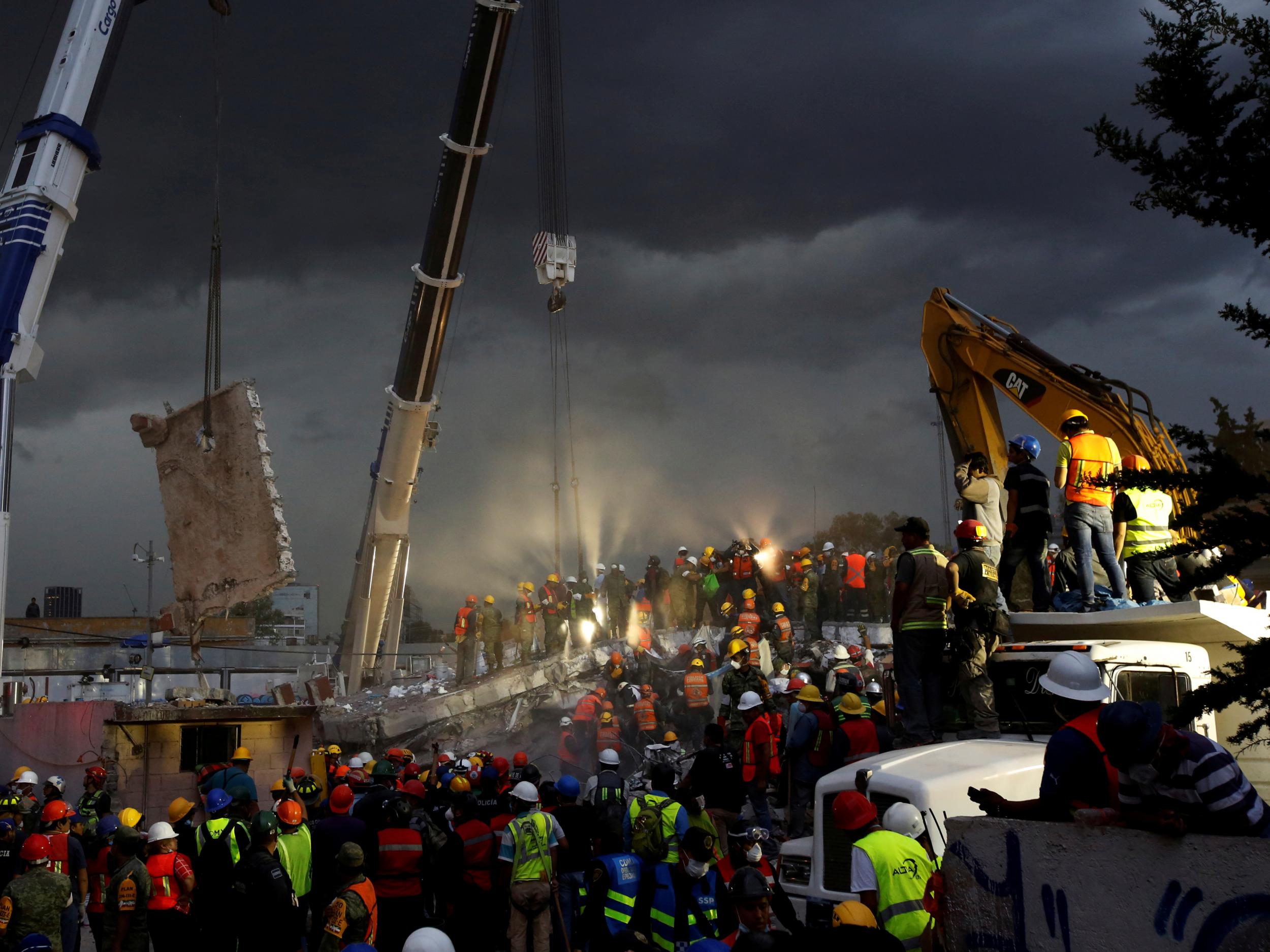We could see twice as many big earthquakes this year, scientists warn - because the equator has shrunk
The Earth is spinning a little slower than usual right now. That could mean a lot more earthquakes with at least a magnitude 7.0 ahead in 2018

Your support helps us to tell the story
From reproductive rights to climate change to Big Tech, The Independent is on the ground when the story is developing. Whether it's investigating the financials of Elon Musk's pro-Trump PAC or producing our latest documentary, 'The A Word', which shines a light on the American women fighting for reproductive rights, we know how important it is to parse out the facts from the messaging.
At such a critical moment in US history, we need reporters on the ground. Your donation allows us to keep sending journalists to speak to both sides of the story.
The Independent is trusted by Americans across the entire political spectrum. And unlike many other quality news outlets, we choose not to lock Americans out of our reporting and analysis with paywalls. We believe quality journalism should be available to everyone, paid for by those who can afford it.
Your support makes all the difference.You probably didn't notice, but the Earth is taking things a little slow right now.
Since 2011, our planet has been rotating at a pace a few thousandths of a second slower than usual.
Our planetary spin cycle changes constantly, affected by ocean currents and atmospheric changes, as well as the mantle and molten core underneath the Earth's crust. But the current pattern has a team of geologists worried about earthquakes.
Roger Bilham and Rebecca Bendick warn that the Earth's slowing could lead to more than twice as many earthquakes with at least magnitude 7.0 in 2018 as in the past year.
Bilham, who studies earthquakes at the University of Colorado, told Business Insider that when the Earth's pace lags for years at a time, its middle contracts. That shrinks the equator, but it's hard for the tectonic plates that form Earth's outer shell to adjust accordingly.
Instead of falling in line with the slimmer waistline, the edges of those plates get squeezed together.
This all takes time for us to feel on the ground. But after five years without many high-intensity quakes, we're approaching the moment when the effects of this squeeze could be felt around the globe, Bilham said. He estimates the planet could see, on average, 20 high-magnitude earthquakes in each of the next four years. By comparison, just seven earthquakes registered above a 7.0 in 2017.
This lagging-Earth phenomenon isn't prompting any earthquakes that weren't already in motion. Instead, Bilham said, the slower spin adds more stress and pressure to some of these quakes, pushing them to happen more quickly, especially in earthquake-prone zones.
The effect may be felt the most in the tropics, near the equator.
Bendick, who studies geologic hazards at the University of Montana, wrote a report with Bilham last year hinting at this phenomenon. Their latest findings are still under review.
She said it was important to remember that the Earth's rotation changes all the time, for all kinds of reasons - storms, snow buildup, and ocean patterns can all have an influence.
But Bendick said earthquake records from the past 117 years suggest they're sensitive to a special kind of 10-year rotational slowdown like the one we seem to be experiencing now. This is most likely because of “interactions of the lithosphere, mantle, and core,” she told Business Insider in an email.
The researchers say they hope city planners and politicians in earthquake-prone zones will heed their latest warning and work quickly to retrofit buildings or update emergency plans. They also advise people to talk to loved ones about disaster preparedness.
“There is no good reason for people not to take simple steps to be better prepared,” Bendick said.
• Man who studied rich people found 3 etiquette aspects they never shirk
• 11 horrible body language habits that are hard to quit
• How the ancient Greeks proved Earth was round over 2,000 years ago
Read the original article on Business Insider UK. © 2016. Follow Business Insider UK on Twitter.
Join our commenting forum
Join thought-provoking conversations, follow other Independent readers and see their replies
Comments